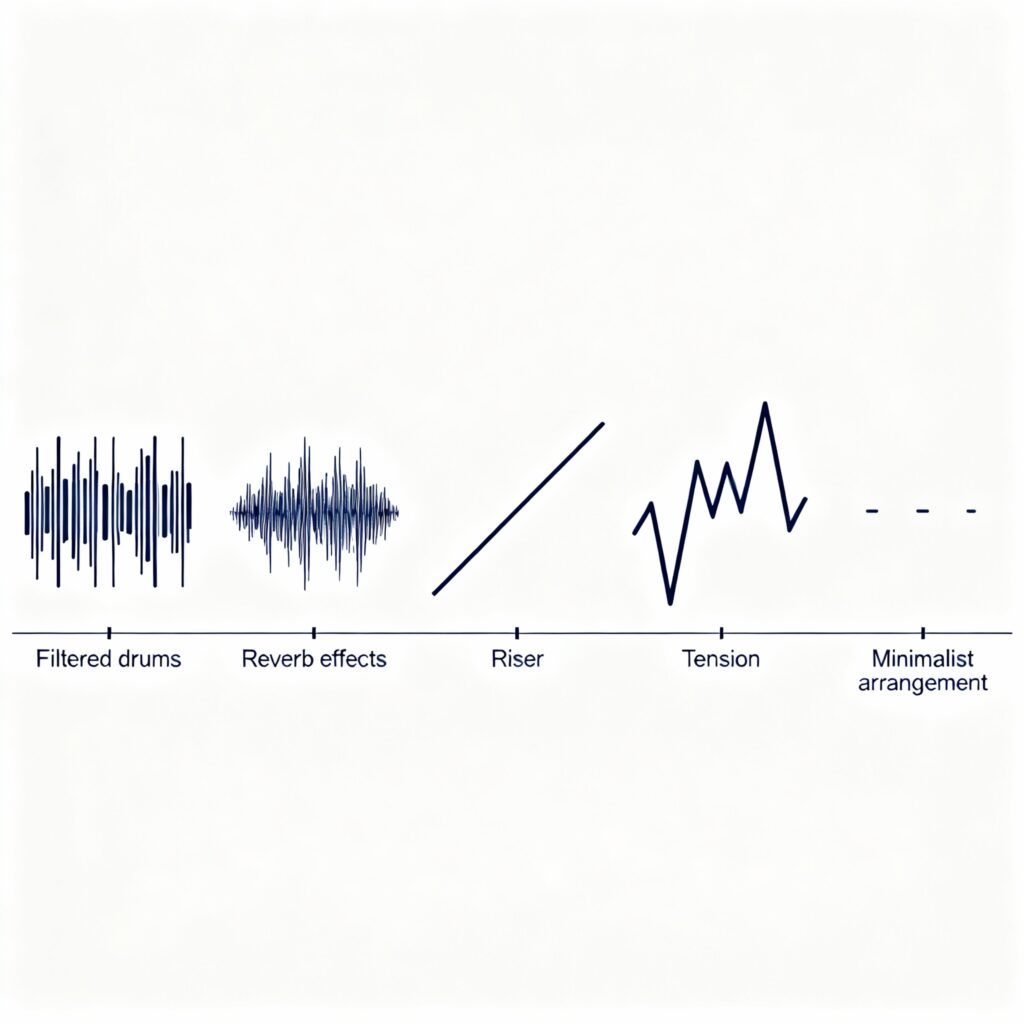The Ultimate Guide to Techno Track Structure
Understanding techno track structure is the single most important skill for turning an 8-bar loop into a compelling, DJ-friendly journey. It’s the invisible architecture that dictates a track’s energy, flow, and impact on the dancefloor. This guide is your definitive blueprint, breaking down the art of arrangement into clear, actionable parts.
While techno can be incredibly diverse, from the raw power of Hard Techno to the atmospheric depths of Melodic House & Techno, most tracks share a fundamental structure designed for maximum impact. This guide will deconstruct the anatomy of a classic techno track, giving you the knowledge to both produce and play it effectively.

In This Guide, We’ll Deconstruct:
- The Core Philosophy of Techno Track Structure
- Part 1: The DJ-Friendly Intro
- Part 2: The Build-Up and First Drop
- Part 3: The Main Section & The Breakdown
- Part 4: The Climax & Second Drop
- Part 5: The Outro
- Beyond the Blueprint: Evolving Your Structure
The Core Philosophy of Techno Track Structure
Before we dive into the sections, we must understand the core philosophy: a techno track is a tool for a DJ. Its structure must be logical, predictable (but not boring), and designed to be mixed seamlessly with other tracks. The goal is to create a hypnotic journey of tension and release, guiding the dancefloor through a controlled wave of energy.
Part 1: The DJ-Friendly Intro (The First 64 Bars)
The intro is your track’s handshake. For a classic techno track structure, the intro is typically 64 bars long (around 2 minutes at 130 BPM). It starts sparsely, often with just the kick drum and some light percussion or a filtered atmospheric element. Every 16 or 32 bars, a new element is introduced—a hi-hat, a subtle synth stab, a rising pad—to build energy gradually. This long, uncluttered intro gives the DJ ample time to beatmatch and blend your track into their set smoothly.
This long intro is a core concept of what makes an arrangement DJ-friendly, a topic explored in-depth by the experts on the official Ableton Blog.
Part 2: The Build-Up and First Drop
After the intro, the track begins its main ascent. Here, you introduce more prominent rhythmic and melodic elements. A signature synth riff or a key bassline element might enter, filters will start to open up, and the energy visibly increases. This section usually culminates in a “mini-drop” or the first main drop around the 65th bar, where the core groove elements (kick, bass, main percussion) hit with full force for the first time, establishing the track’s main identity.
Part 3: The Main Section and The Breakdown
This is the heart of the journey. The track now settles into its main groove, a hypnotic loop that carries the listener forward. The key to a great main section is subtle evolution: use automation on filters, delays, and reverbs to ensure the loop never feels static. After 64 or 128 bars of this driving energy, you arrive at the main breakdown. Here, the kick and bass are often removed completely, leaving space for atmospheric pads and the main melodic theme to take center stage, creating a moment of pure emotional release or suspense.
The art of the breakdown is central to the live techno experience. Legendary artists like Carl Cox often discuss in interviews how they use these moments of suspense to connect with the crowd before the drop.

Part 4: The Climax and Second Drop
The breakdown builds tension to its breaking point, often using snare rolls, rising white noise, and dramatic filter sweeps. This culminates in the second, and usually most powerful, drop of the track. When the kick and bass return, they hit with maximum impact. This is the peak of the track—the moment the entire dancefloor has been waiting for. The subsequent section is the track’s energy climax, featuring all the main elements playing together in full force.
Part 5: The Outro – The DJ’s Best Friend
Just as important as the intro, the outro provides a smooth exit ramp for the DJ. It mirrors the intro in reverse, typically lasting 64 bars. Elements are gradually stripped away, often leaving just the kick and percussion at the very end. A clean, predictable outro is a sign of a professional producer who understands the art of DJing, a concept also highlighted by experts at Mixmag.
Beyond the Blueprint: Evolving Your Techno Track Structure
Once you’ve mastered this classic formula, you can start to break the rules. Experiment with shorter intros, double breakdowns, or unconventional elements. The key is to understand the “why” behind the classic techno track structure before you deconstruct it. A track with a strong arrangement is the foundation for a professional sound. To ensure that sound is technically perfect, our Mixing and Mastering Services can provide that final, crucial polish. If you have the vision for a track but want a guaranteed professional structure built by experts, our Custom Ghost Production service is the ultimate shortcut to a perfect arrangement.
Once your track has the perfect structure, the next step is getting it heard. Learn how to promote your tracks effectively with our complete strategic guide.

